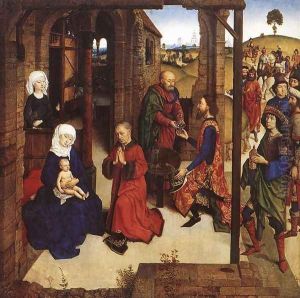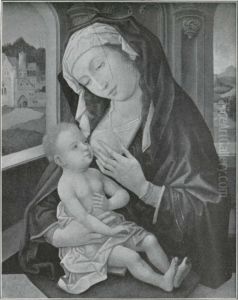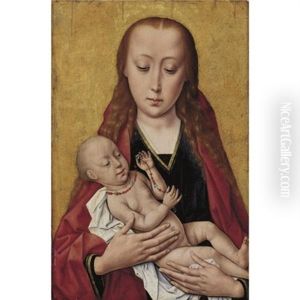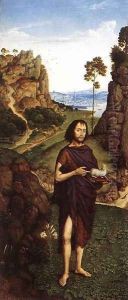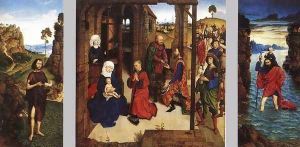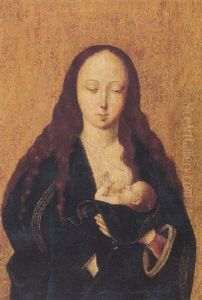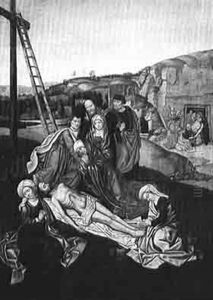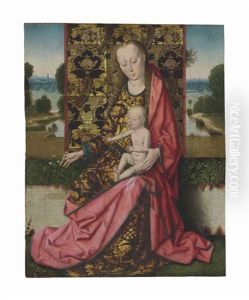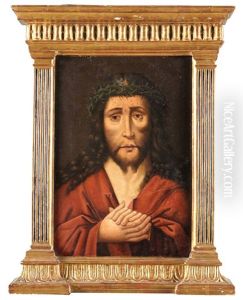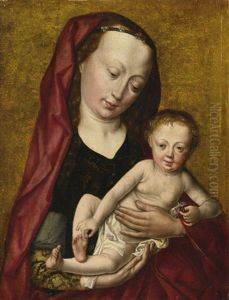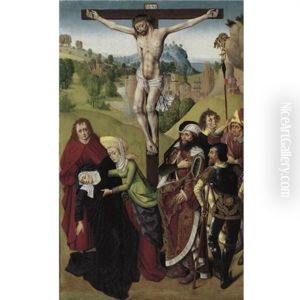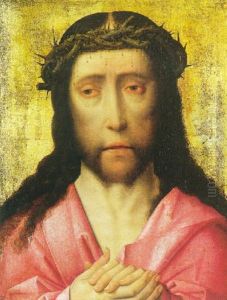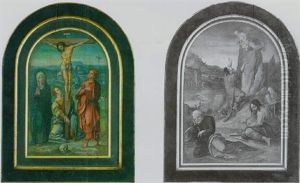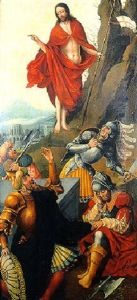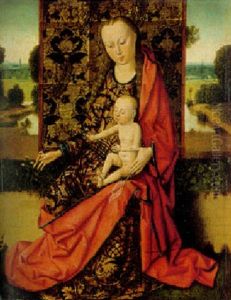Dieric the Younger Bouts Paintings
Dieric Bouts the Younger was a Flemish painter who is often overshadowed by the reputation of his father, Dieric Bouts the Elder, one of the early Netherlandish painters. While much of his life remains shrouded in mystery, Dieric the Younger was active in the city of Leuven, Belgium, and his career spanned the latter half of the 15th century, a period that witnessed the flowering of Early Netherlandish painting.
Born around 1448, Dieric Bouts the Younger was likely trained by his father, who was renowned for his devotional panels and altarpieces characterized by their serene figures and use of color and light. The younger Bouts inherited his father's workshop after his death in 1475. Like other artists of the period, Dieric the Younger's work was deeply influenced by the artistic traditions established in the Burgundian Netherlands, which included meticulous attention to detail, a high degree of realism, and complex iconography.
Dieric the Younger's style did not radically depart from that of his father, and as a result, art historians have sometimes had difficulty distinguishing between their works. However, certain pieces are attributed to him based on documentation or stylistic analysis. His oeuvre includes religious compositions, altarpieces, and possibly some secular works, though the latter are less well-documented.
One of the challenges in studying Dieric the Younger's work is the scarcity of surviving paintings firmly attributed to him. However, those that are considered his show a high level of craftsmanship and an adherence to the family style, with a somewhat softer and less rigorous approach than that of his father. Dieric the Younger continued to operate in Leuven, and his workshop contributed to the spread of the Bouts family style throughout the region.
Dieric the Younger's death in 1491 marked the end of the direct line of the Bouts painting dynasty. While not as famous or influential as his father, Dieric the Younger played a role in maintaining and extending the stylistic achievements of the Early Netherlandish painters. His works can be seen in various museums, where they continue to be appreciated for their quiet beauty and devotional character.
